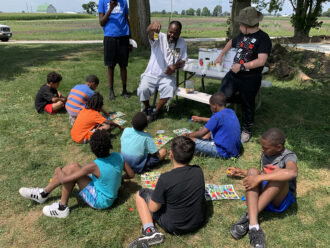The Challenge
While fresh, local foods have become very popular in grocery stores, restaurants, and farmers’ markets, “institutionalized food is the forgotten part of the food revolution,” says Ann Swanson, the farm director at Hendrick House, a private business that offers housing, catering and dining hall services for the University of Illinois Urbana-Champaign. The institutions that provide dining services for grade schools and higher education tend to favor pre-packaged, processed foods over fresh, homemade foods because they are cheaper to source and nutritional guidelines are easier to track. Also, food service employees often lack the skills or training to prepare fresh foods. To ensure the long-term survival of the Hendrick House Farm and to create new opportunities for other local farmers, Swanson set out to bring the local food revolution to her company and to schools in her community.
The Actions Taken
Supported by a three-year SARE Farmer/Rancher grant, Swanson launched a series of educational activities for multiple audiences, based out of Hendrick House’s kitchens and at its 10-acre farm, which includes a one-acre demonstration area. She created a guidebook and held workshops for food service staff on storage and preparation of fresh foods, and worked with chefs on how to plan for and procure local, seasonal produce.
Swanson also teamed up with area nonprofits and schools to bring youths to her demonstration farm so they could see where food comes from and learn how to make healthy food choices. She hosted a range of groups, including kindergarteners, middle and high schoolers, STEM classes and a group of at-risk boys. During the course of the project, her outreach grew to include the Illinois Master Gardeners and Parkland College, which held horticulture and culinary classes on the farm.
The Impacts
“This project has changed our company immensely over the last two years,” says Swanson, who also cites new partnerships with area schools and nonprofits as positive results. Specific impacts include:
- Sourcing from local farms: Every chef in the Hendrick House company is now using produce from its farm, whereas before the project only 30% were. Also, the company more than doubled the amount it spent on local food from outside farms, and it doubled the number of farms it bought produce from to 12.
- More institutions on board: The farm-fresh produce Hendrick House buys is now being served through other institutions it contracts with, including a community college, a medical center and a drug rehabilitation clinic.
- Ongoing youth education: The number of youth workshops held at the farm went from two in 2017 to 20 in 2019.
